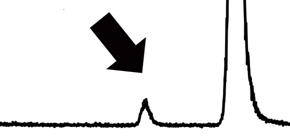
Discovery of biomarkers for the prognosis of chronic kidney disease
Prognosis prediction of kidney, heart, and lifestyle-related diseases as well as new treatment methods anticipated
Abstract
Currently, there is no effective method to predict the prognosis of chronic kidney disease (CKD) patients. Tomonori Kimura and Yoshitaka Isaka, researchers in Department of Nephrology, Osaka University, found that measuring D-amino acids *1 , which present only traces in human, provides prognostic information of CKD. This discovery will facilitate CKD treatment and thus improve the prognosis of CKD, and may also lead to the further discovery of novel therapeutic methods. The potential application is not limited to kidney diseases: the disease context ranges to life style-related diseases such as diabetes mellitus and hypertension, as well as lethal diseases including cardiovascular diseases.
Main text
Chronic kidney disease (CKD) is a critical health problem. CKD patients are highly-prevalent throughout the world, and the number of end-stage kidney disease (ESKD) patients, who need to receive cost-prohibitive kidney replacement therapy, is increasing year by year (Figure 1). Additionally, the risk of cardiovascular diseases and death increases with the progression of CKD stages. In Japan, the number of ESKD patients receiving kidney replacement therapy is over 320,000, including 30,000 patients who start it every year. Moreover, it was estimated that about 10% of Japanese population have CKD. Thus, it is critical to prevent CKD patients from progression to ESKD; however, there are no effective methods to predict the progression of CKD.
On the other hand, D-amino acids, the enantiomers * 2 of L-amino acids, are increasingly recognized as potential biomarkers in several diseases. Although the amounts of D-amino acids are usually very trace in humans and their existence has been overlooked, recent technological advancement enables us to measure D-amino acids simultaneously with high sensitivity at fentomole * 3 levels (Figure 2). This research group from Osaka and Kyushu University searched for prognostic biomarkers of CKD through a chiral amino acid metabolic profiling * 4 .
The research group measured D-amino acids in blood from CKD patients by applying micro-two-dimensional HPLC (2D-HPLC) system * 5 developed by Kenji Hamase, Department of Pharmaceutical Science, Kyushu University, and followed their prognoses. 16 out of 21 D-amino acids were detected in blood from CKD patients. Further analyses revealed that D-Serine and D-Asparagine were associated with the progression of CKD (Figure 3); the risk of progression to ESKD was elevated from 2- to 4- fold in those with higher levels of those D-amino acids (Figure 4).
The results of the present study will provide novel methods to the clinician which can identify CKD patients at high-risk for progression to ESKD. The information of D-amino acids would enable selection of the best treatment for each individual, as well as the discovery of novel therapeutic methods. This method is also applicable to diseases such as life style-associated diseases (diabetes mellitus and hypertension) and cardiovascular diseases, as the prognoses of these diseases are strongly influenced by CKD progression.




Reference :
Kimura T, Hamase K, Miyoshi Y, Yamamoto R, Yasuda K, Mita M, Rakugi H, Hayashi T, Isaka Y: Chiral amino acid metabolomics for novel biomarker screening in the prognosis of chronic kidney disease. Scientific Reports 6: 26137, 2016
Contact information
Professor Yoshitaka Isaka
Department of Nephrology, Osaka University Graduate School of Medicine
2-2 Yamadaoka, Box B6, Suita, Osaka 565-0871 Japan
TEL:+81-6-6879-3857 FAX:+81-6-6879-3230
E-mail:isaka@kid.med.osaka-u.ac.jp
Terminology :
*1 D-amino acid
Most amino acids, the component of proteins, have two chiral bodies (stereoisomers): L-amino acids and D-amino acids. The amino acids present in life systems are the L-forms almost exclusively, however, current technological advancement has just revealed the presence of D-amino acids in higher animals including humans, and the D-amino acids are gradually recognized as physiologically active molecules. D-Serine and D-Asparagine, which are highlighted in the current report, are the stereoisomers of L-Serine and L-Asparagine, respectively.
*2 Enantiomer (chiral body)
An etantiomer (also known as optical isomer or chiral body) is one of two stereoisomers that are mirror images of each other, just like one’s left and right hands. L-amino acids cannot be superimposed to their chiral bodies, D-amino acids.
*3 fentomole (fmol)
A billionth of a millionth (10 -15 ) of a mole. Very trace amount.
*4 Metabolome profiling
Metabolome is the collection of all metabolites in the measured samples. Metabolome profiling is to study the metabolome systematically.
*5 2D-HPLC system
HPLC (high performance liquid chromatography) is a technique to separate, identify and quantify each component in a mixture. Single HPLC system is not sufficient to detect amino acids with chiral selectivity. The 2D-HPLC system, composed of tandemly-connected two HPLC systems, has enabled the detection of amino acids with chiral selectivity.
To learn more about this research, please view the full research report entitled " Chiral amino acid metabolomics for novel biomarker screening in the prognosis of chronic kidney disease " at this page of the Research Gate website.
Related link
